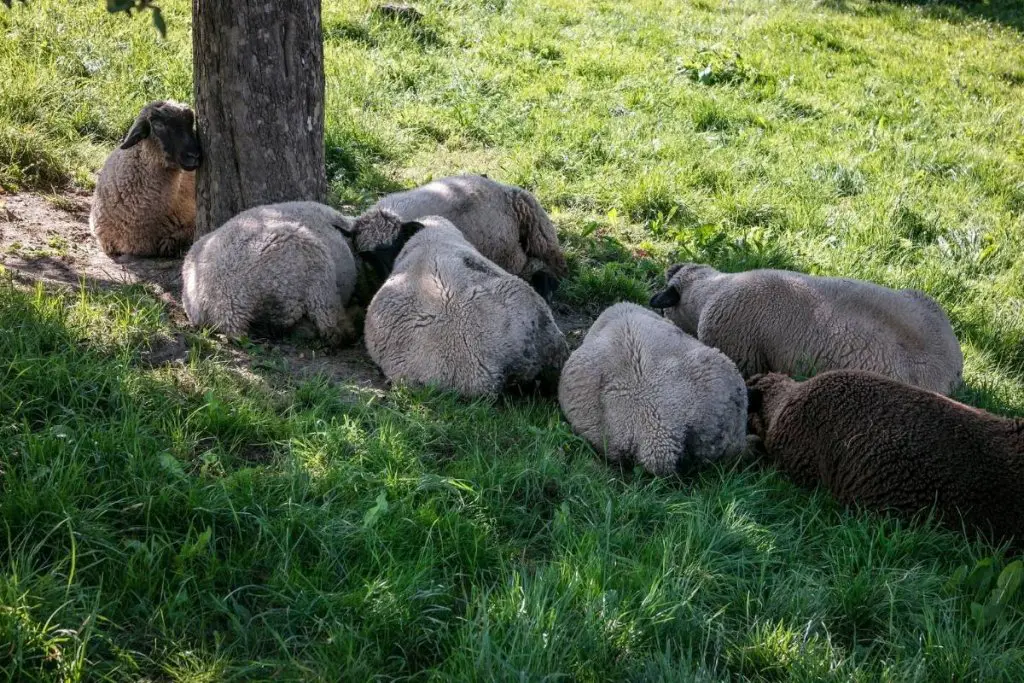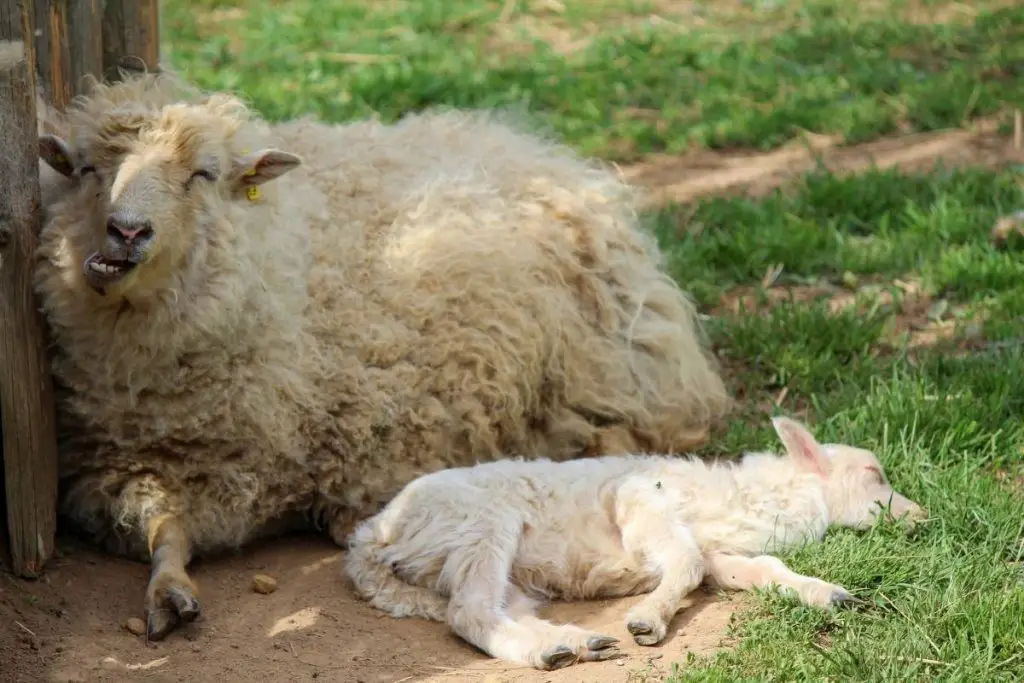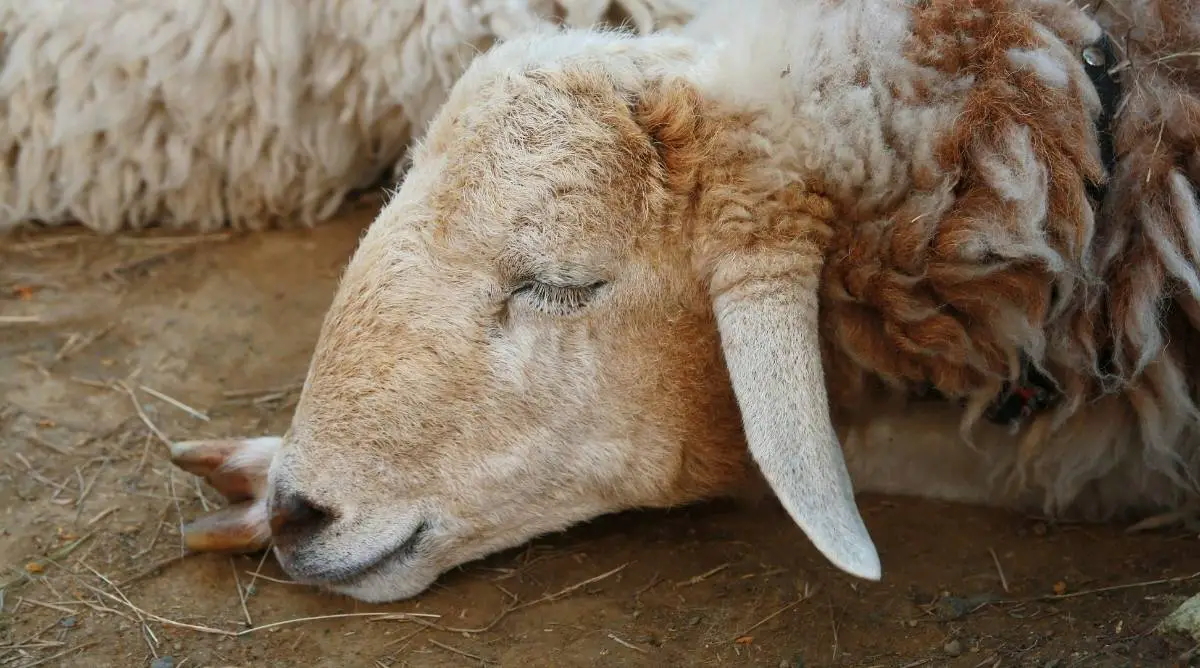Sheep sleep about four hours a day, often laying down but sometimes standing up. They sleep at night, taking short naps rather than one long sleep session. Sheep generally sleep outside in fields, finding shelter only during harsh weather.
Table of Contents
How do sheep sleep?
Sheep often sleep together in a flock because they are prey animals. Safety from predators is greater when in a group.
Sheep stay aware of predators while sleeping by taking short, frequent naps. Sheep only sleep for a few minutes at a time.
Moreover, only 2% of their sleep time is REM sleep. REM sleep (Rapid Eye Movement) is a phase of sleep in mammals and birds where the animal falls into deep sleep. This helps them avoid being oblivious of their surroundings and at risk of being attacked by predators.
Do sheep sleep standing up or laying down?

Sheep typically sleep laying down, but may take naps while standing. Since they sleep only in short bursts, it’s possible for them to sleep in either position.
When you’re observing sheep in a pasture, look for oval patches of flat grass. This shows you where your sheep are laying down to sleep.
How long do sheep sleep?
Sheep sleep for approximately 4 hours per day. These 4 hours of sleep are divided into short naps rather than one long sleep.
However, newborn lambs sleep for much longer than their adult counterparts. A lamb can sleep for a total of 12-16 hours a day. They will often curl up next to their mother to sleep.
From an early age, lambs acquire the flocking instinct. They naturally sleep where they can see other sheep around them.
Like humans, sheep are diurnal and sleep at night, but may nap during the day too.
Where do sheep sleep?

Where sheep sleep depends on the weather and how safe the animals feel. If the weather is good, most sheep prefer sleeping outside. But bad weather with strong winds causes them to seek a sheltered spot under trees or in a building like a barn.
Keeping your barn open gives sheep the option of sleeping inside or outside, based on their preferences.
Some sheep require shelter, including:
- Sheep that have been shorn in winter. Sheep depend on their wool to remain warm during cold weather. If you shear them in winter, you need to keep them indoors in a barn.
- Ewes that are about to lamb during a cold season. Newborn lambs should not be exposed to extreme cold. To properly monitor a ewe that’s about to lamb in cold conditions, keep them indoors.
- Ewes with small lambs during harsh weather. During winter, it’s safer keep ewes with young lambs inside the barn. Ewes may not keep track of their lambs, so they could be accidentally left outside when harsh weather strikes.
- Sheep that are unwell. If you need to check on your sick sheep regularly at night or give them medication, keeping in a barn will make your life easier.

